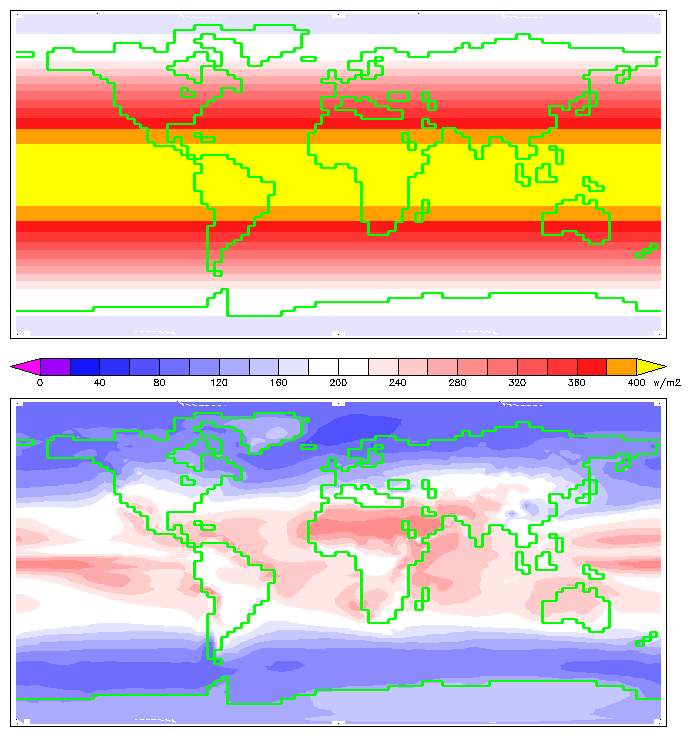Insolation
This term is sometimes confused with insulation.
Insolation is the incident solar radiation onto some object. Specifically, it is a measure of the solar energy that is incident on a specified area over a set period of time. Generally insolation is expressed two ways. One unit is kilowatt-hours per square meter (kWh/m2) per day [1] which represents the average amount of energy hitting an area each day. Another form is watts per square meter (W/m2) which represents the average amount of power hitting an area over an entire year.
Not all of the solar energy that reaches the Earth actually reaches the surface of the Earth. Although 1367 W/m2 of sunlight strikes the outer atmosphere, about 30% of it is reflected back into space. After this reflection, a certain spot on the Earth might see almost all or almost none of this sunlight. There are many factors that help determine how much sunlight actually reaches a given area, but some of them include sun angle[2], air mass, day length, cloud coverage, and pollution levels.[3]

When solar radiation hits an object, some of the energy will be absorbed while the rest is reflected. Generally the absorbed solar radiation is converted to thermal energy, which causes the object to heat up. However in some cases, the incident energy can be absorbed and converted into another form of energy. This is the case in photovoltaic cells used on solar panels. Thus understanding insolation (the amount of energy that hits an area) is important in maximizing the output of solar panels which absorb and convert this energy. To maximize output, factors such as the geographic location of solar panels and orientation can be determined by understanding insolation values.[5]
Importance
It is important to have values for insolation at certain positions on the Earth as these figures are used to help determine the size and output of solar power systems. Values for insolation can help to determine the expected output for solar panels and to understand where on Earth solar panels would be most effective.[5]
As well, insolation is an important consideration in construction. When constructing a building in a particular climate, it is important to understand what the temperature and insolation will be like to ensure maximum comfort and energy efficient building design.
For Further Reading
References
- ↑ Alternative Energy. (August 4, 2015). What is Insolation? [Online]. Available: http://www.altenergy.org/Glossary/insolation.html
- ↑ angle the sun makes with the perpendicular of the surface
- ↑ A.Watson, D.Watson. (August 5, 2015). Insolation [Online]. Available: http://www.ftexploring.com/solar-energy/insolation.htm
- ↑ Wikimedia Commons. (August 4, 2015). Insolation [Online]. Available: https://commons.wikimedia.org/wiki/File:Insolation.png
- ↑ 5.0 5.1 Solar Insolation. (August 6, 2015). Solar Insolation [Online]. Available: http://solarinsolation.org/

